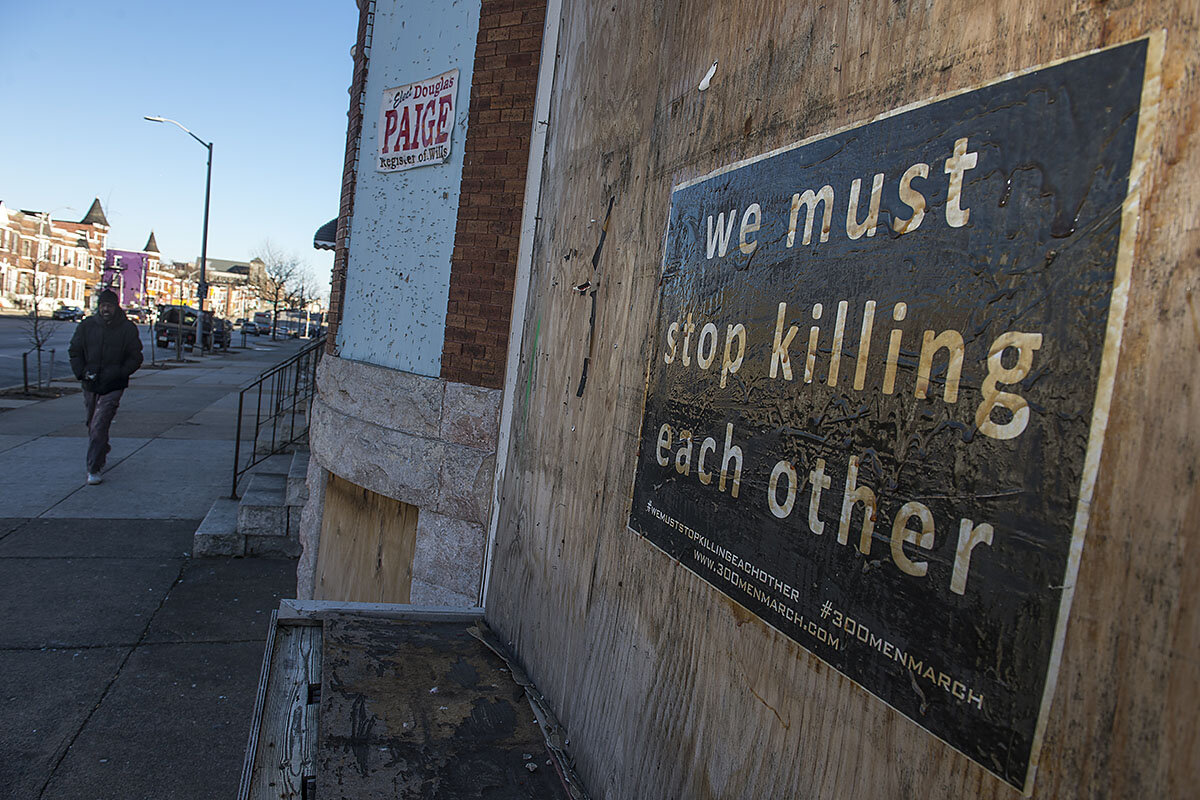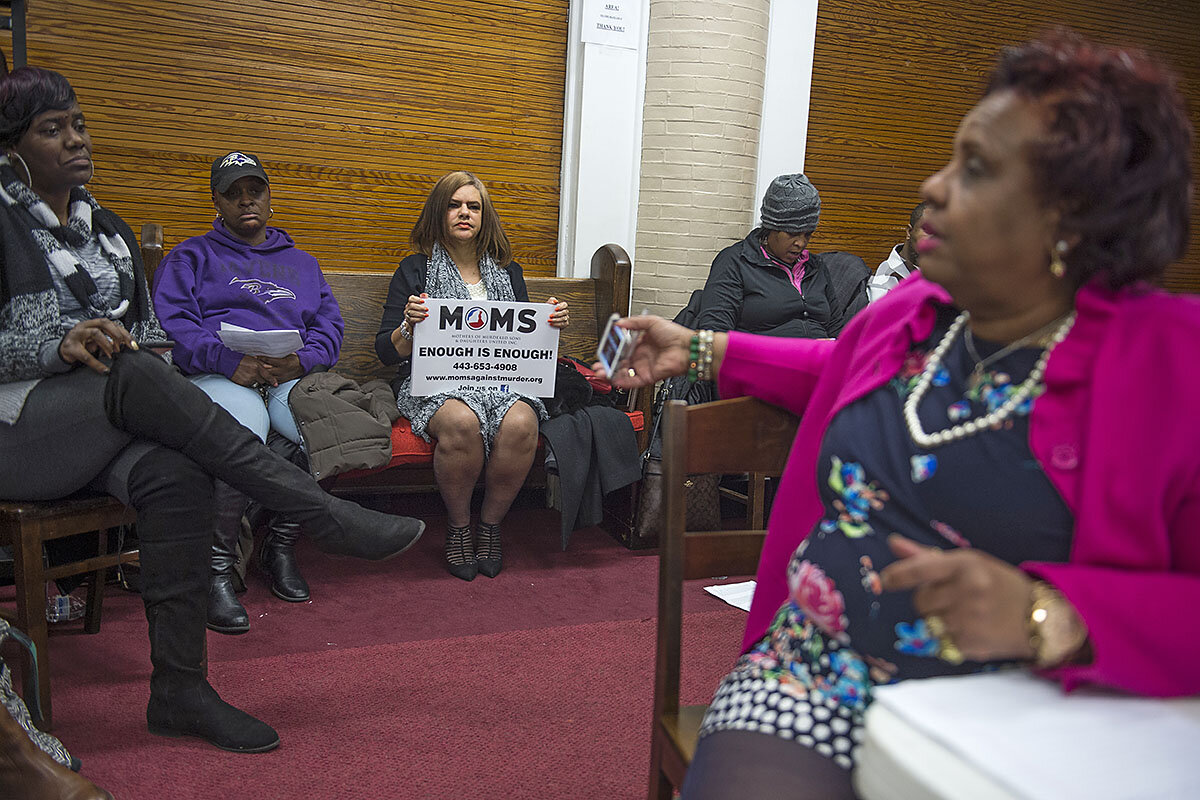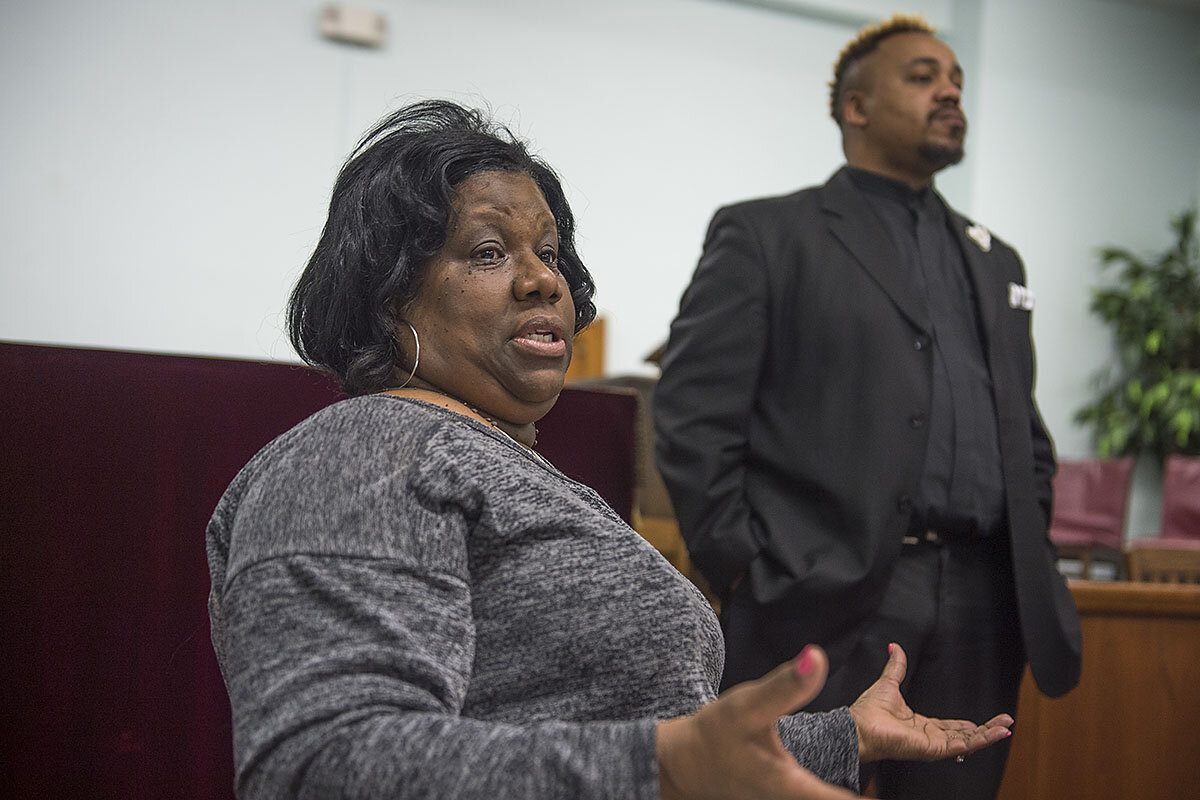A tale of two cities and murder
Loading...
| BALTIMORE AND NEW YORK
Two American cities, separated by just 200 miles along the Northeast corridor, tell two very different stories about the crime of murder.
Just look at last year’s numbers, their raw inverted symmetry, each historic and jaw-dropping:
Baltimore, population 615,000, had 343 murders last year. That’s a murder rate of 55.8 per 100,000 people, the highest the city has ever seen.
New York, population 8.5 million, had 290 murders last year. That’s a murder rate of 3.3 per 100,000 people, and , going back at least 70 years.
The cities' inverted symmetry is visible in other ways as well. More than three years after its officers subdued Eric Garner in a chokehold, causing his death, the New York City Police Department has reported fewer stops, fewer arrests, and fewer complaints. Presiding over three straight years of record lows in overall crime, the NYPD now points with pride to New York's status as one of the safest big cities in the world.
Almost three years after its officers subdued Freddie Gray and took him on a “rough ride,” causing his death, the Baltimore Police Department has also reported fewer stops and . Presiding over two all-time high murder rates in three years, the BPD is in turmoil. Two officers in the elite gun task force were found guilty this week of racketeering and robbery, forcing prosecutors to The mayor fired the police commissioner. And some their police force is not doing enough to protect their neighborhoods.
With numbers so stark, the stories these two American cities tell invite an obvious question: Why? What has New York been doing right? Why is Baltimore in such a state?
Flash back to 2011, and the stories were different. There were 196 murders in Baltimore, the first time the city had fallen below 200 homicides in more than 30 years. Officials and community leaders .
It seemed their efforts were finally paying dividends. Forget the puns about Bodymore, Murderland. Maybe the city’s troubled western neighborhoods could finally find gleams of cautious optimism, or even hope to see the dawn of a civic and economic revitalization, just like that of Baltimore’s famous inner harbor, scene of “The Star Spangled Banner.”
In New York that year, there were 515 murders. The city’s 20-year run of plummeting murder rates seemed to flatline. The city was tense. Police officers were stopping and frisking nearly 700,000 people that year – more than the entire population of Baltimore.
City officials and community leaders were waging bitter battles over those ever-increasing numbers, and 2011 would mark the crescendo in the NYPD’s decade-long surge in the .��
It seemed these efforts were driving deeper divisions. Forget the mean streets of New York. For dozens of civic groups, the most pressing need was to stand against the tactics of the nation’s largest police force, and many within black and Latino neighborhoods were bristling under what they called a virtual police state. Many saw the city’s famous statue in its inner harbor not as a beacon of liberty, but irony.
Which abounds, actually, in the country’s stories about the crime of murder. By 2014, the year of Eric Garner’s death, the United States was experiencing its lowest murder rate in 51 years: .
The nation is still in the midst of what criminologists call “the great crime decline,” in fact. Since its peak in 1991, the country’s overall violent crime rate has fallen by more than half.
By the numbers, the United States hasn’t been this safe overall, as Mayor Bill de Blasio (D) said of New York earlier this year, since “the Dodgers played in Brooklyn and a slice was 15 cents.”
But .
Besides Baltimore, other American cities, such as Chicago, Detroit, and St. Louis, have also experienced troubling spikes in murders.
These were the primary drivers behind a double-digit jump in the nation’s murder rate in 2015, the largest in a quarter century. Based on preliminary numbers, experts predict the US murder rate to drop some 5.6 percent in 2017.
In many of these cities, too, these spikes occurred in the midst of the deaths of unarmed black men during encounters with police. The emergence of Black Lives Matter and the controversy over NFL players kneeling during the national anthem have laid bare the nation’s deep-seated racial anxieties, and the long-standing tensions between police departments and black communities.
Which is one reason why the historic stories of murder in New York and Baltimore feel so urgent now.
Since getting out of prison about a year ago, Nathaniel Powell has had a burning sense of purpose: Teach these kids on the streets of Baltimore their actions have consequences, he says.
He was telling his story on a Sunday afternoon in January, standing in front of a group of mothers who had experienced the murder of a son or daughter. They were holding their monthly meeting, sharing their own experiences of loss at St. John’s Alpha and Omega Pentecostal Church in west Baltimore, one of the most violent neighborhoods in the country. A few blocks away, the first sparks kindling the riots of 2015 erupted, part of a wave of unrest in the city after the homicide of Freddie Gray.
“I’m sitting here, fighting back tears listening to y’all,” says Mr. Powell. “It’s humbling, because I was one of these little kids.... I was one of those narcissistic little kids carrying a semiautomatic weapon. That’s the environment I grew up in in west Baltimore.”
In 1996, when he was 17 and the United States was just starting to recover from one of the most serious crime waves on record, Powell shot a Baltimore police officer. He served nearly 21 years in prison for attempted murder.
Now, he tells the mothers, he's making a documentary film, “The Code of The Street,” highlighting the devastating effects of making decisions rooted in violence. His film, and his visits to schools and civic groups to tell his story, is aimed at the young black men most at risk. He came this afternoon to ask mothers to tell their stories on camera, so kids could see the deep anguish their actions could cause.
There were activists meeting with the mothers, too. Community organizers from groups such as Moms Demand Action, Marylanders Against Gun Violence, and the National Survivor Network were updating the mothers on various legislative efforts to address the social conditions behind the jaw-dropping spike in murders.
But here at St. John’s Pentecostal, there’s a strong current of what could be called a common-sense conservatism.
That mirrors , as well as to the congregations that often form the backbone of black political life, especially that of older generations. Despite being the Democratic Party’s most loyal and reliable base, scholars say, .
Many within the group, , describe themselves as supporters of the police department. Their group has co-sponsored police initiatives, and remains a part of “We Speak Up,” a collaborative project with Metro-Crime Stoppers and other faith groups to combat the anti-snitching culture in Baltimore, a non-cooperation with police that allows murderers to stay on the streets.
“We need the front-line police officers and we need the heart of the black community to step to the forefront of this discussion,” said the Rev. Kinji Scott, a local pastor who’s held positions in city government. “And that's when we're going to see a decrease in crime.” Those who called for police to back off after the death of Freddie Gray, Mr. Scott , were “our progressives, our activists, our liberal journalists, our politicians, but it did not represent the overall community.”
Powell, who now lives with his wife and two children, says he pondered this question for years while in prison. He believes that individuals and families must change first, before their wider neighborhoods can change.
“It took something to revolutionize my perspective on life for me to change as a person, as an individual,” says Powell. “And it wasn’t having a gun or not having a gun, because a gun don’t hurt people; people hurt people. If wasn’t a gun it would have been a knife. If it wasn’t a knife it would have been a bat. If wasn’t a bat, it would have been a stick.”
One of the mothers had a question, however, a question on most all of these mother’s minds: “What caused you to do this?” she asked. “What happened at home? What made you do what you decided to do?”
Powell remembered how hard his own mother tried to keep him in line, and he told them he thought it was never the mother’s fault. “I got whoopin’s, real whoopin’s, the kind of stuff a person would get locked up for now these days,” he says.
But without the guidance of a man in his life, he says, he learned how to handle his emotions on the street “from somebody I wasn’t supposed to learn from.”
“I wanted to be respected,” Powell says. “I didn’t care what happened. If I felt disrespected in any kind of way, I’m going to get this fully automatic weapon, and I’m going to procure it, we’re going to strap up and come through, and we’re going to shoot your block up.”
What he needed, and what kids now need, he says, is consistent adult male guidance, engaged role models for teens at an already volatile age. Families need men to teach their boys “about who you are, where you come from, and where you fit in relation to everything going on around you.”
“I’m not talking down on legislation in no kind of way,” Powell says. “But we’ve got to deal with it in our own communities and our own households.”
“We have to make sure that our kids is getting raised and taught right, because the first formal organization outside yourself is your family, your family structure, and then it’s the community, because the community is a collection of families, and until you get that foundation strong, we’re going to keep producing these little kids who don’t think nothing about nobody,” he says.
The issue of single parent households and the absence of black fathers has a long and stormy history going back to the 1965 Moynihan Report. It was also , who grew up without a father, and said to many black fathers were “acting like boys instead of men.”
In 2008, Mr. Obama cited figures that showed children who grew up without a father were “five times more likely to live in poverty and commit crime, nine times more likely to drop out of schools and 20 times more likely to end up in prison.” However, the direct correlation has been vigorously contested, and other surveys suggest .
Most of the mothers agree with Powell. “I’m not a legislation-type person, either,” says Daphne Alston, president and founder of M.O.M.S. “I will support things, I just believe in being on the ground – it’s important to me that we touch each child individually,” she says. “That’s how we’re going to change what’s going on.”
Coming Thursday: Part 2, The mothers of Eric Garner and Ramarley Graham reflect on New York's new direction.








